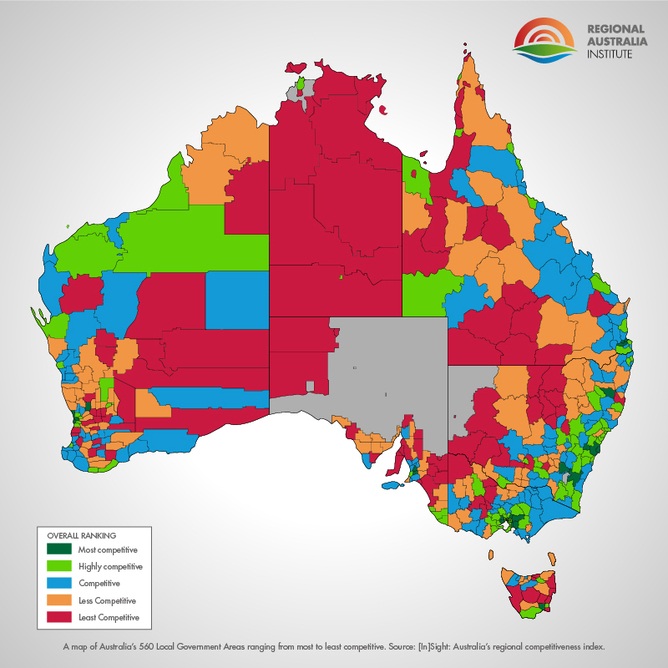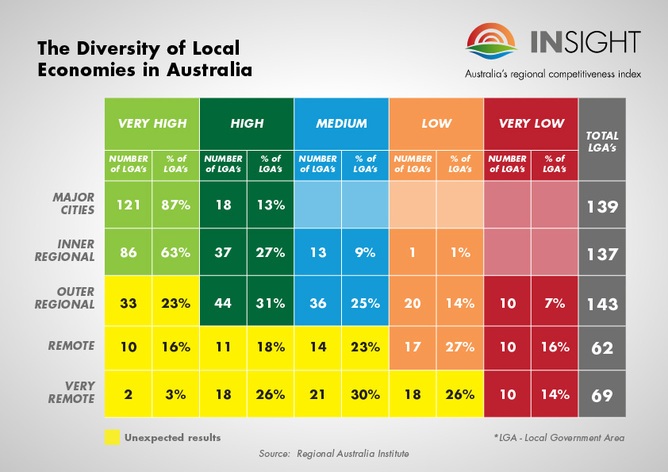A finer brush for a competitiveness restoration
Since his return as prime minister, Kevin Rudd has been firmly focused on ensuring Australia doesn’t falter as it braces for the decline of the mining golden age. National competitiveness has become an agenda in its own right and like most political buzz words, is thrown around a lot but understood very little.
At its heart, competitiveness is about developing the fundamentals that enable Australian business and industry to compete in international markets, driving long term economic success. The complexity lies not in understanding what competitiveness is, however, but what it actually looks like in Australia and how it can be leveraged to ensure a productive and resilient economy.
While we often think nationally about the economy, many aspects of Australia’s competitiveness are driven by localised factors; the unique social, economic and environmental attributes of our many regions. These include natural resource endowments, infrastructure availability, demography and population dispersion, levels of human capital and the quality of public expenditure, all of which differ across the country.
This diversity is one of Australia’s greatest strengths because it provides us with economic options when we need new sources of growth. And although regions are often imagined in terms of their reliance on one or two industries, new research has revealed that many regions are – like the national economy – highly diverse, sustained by a broad range of drivers.
Based on data from [In]Sight, the nation’s first online index of regional competitiveness launched last month, the Regional Australia Institute found that of Australia’s 560 Local Government Areas, 252 are classified as 'highly diverse', spanning major cities to very remote regions. This challenges the popular notion that all regions are highly vulnerable to adverse shocks in their key industry’s markets.
Source: Regional Australia Institute
Take, for example, Geelong. The media discussion surrounding the recent announcements of the Ford factory closure and Labor’s crackdown on the Fringe Benefits Tax, would have you believe that the town is almost exclusively reliant on car manufacturing. In actual fact, while car making and broader manufacturing are important employers, Geelong’s economy is classified as 'highly diverse', with construction, healthcare, education and training, retail and accommodation all significant to the local labour market.
Even in remote Australia’s local government areas, where a high proportion of mining activity takes place, 34 per cent are classified as either 'very high' or 'highly diverse', with a further 23 per cent classed as 'medium'. This reveals the potential for all regions, no matter what their size, location or natural advantages, to respond to shifting local and International market demands, if they can harness local diversity.
To capitalise on these unique advantages, building the levels of innovation, human capital and technological readiness is key. These are the factors that allow a region to grow positively and adapt to changes in markets over time. Yet it is also in these areas that some of the biggest disparities across Australia can be found.
For example, [In]Sight data shows that across local government areas, up to 94 per cent of the potential workforce is either in a job or looking for one in our best performing regions, compared to 27.9 per cent in others. The percentage of the population with a university qualification ranges from 1 per cent to 57 per cent, and technical qualifications span 5 per cent to 47.5 per cent of the working age population. Broadband connections in households range from as high as 85.4 per cent to as little as 9.8 per cent. Clearly, thinking only in terms of national or state averages doesn’t tell us all we need to know.
Source: Regional Australia Institute
Improving the performance of our regions in these areas must be a priority to achieve new growth and productivity. National averages are not good enough to form policy solutions. Health, education and social issues at the local level all intertwine and we need integrated solutions.
If we are really serious about a national competitiveness agenda, then unlocking the unique circumstances of each of Australia’s regions is critical. Unless we are able to respond to these strengths, weaknesses, opportunities and shortfalls, then we run the risk of not just fiscal penalty, but a wasted opportunity in the next wave of industrial changes Australia is poised to undergo.
Jack Archer is general manager of research and policy at the Regional Australia Institute.
The Regional Australia Institute is an independent policy think tank and research organisation for regional Australia. It was established in 2011 with the support of the Australian Government. RAI is governed by Board of eminent Australians including distinguished academics Professor Sandra Harding (Vice-Chancellor of James Cook University) and Professor Ngiare Brown (University of Sydney). All of our research is overseen by a Research Advisory Committee comprised of leading national and international academics with expertise in regional development.
This article was originally published at The Conversation. Read the original article here.















